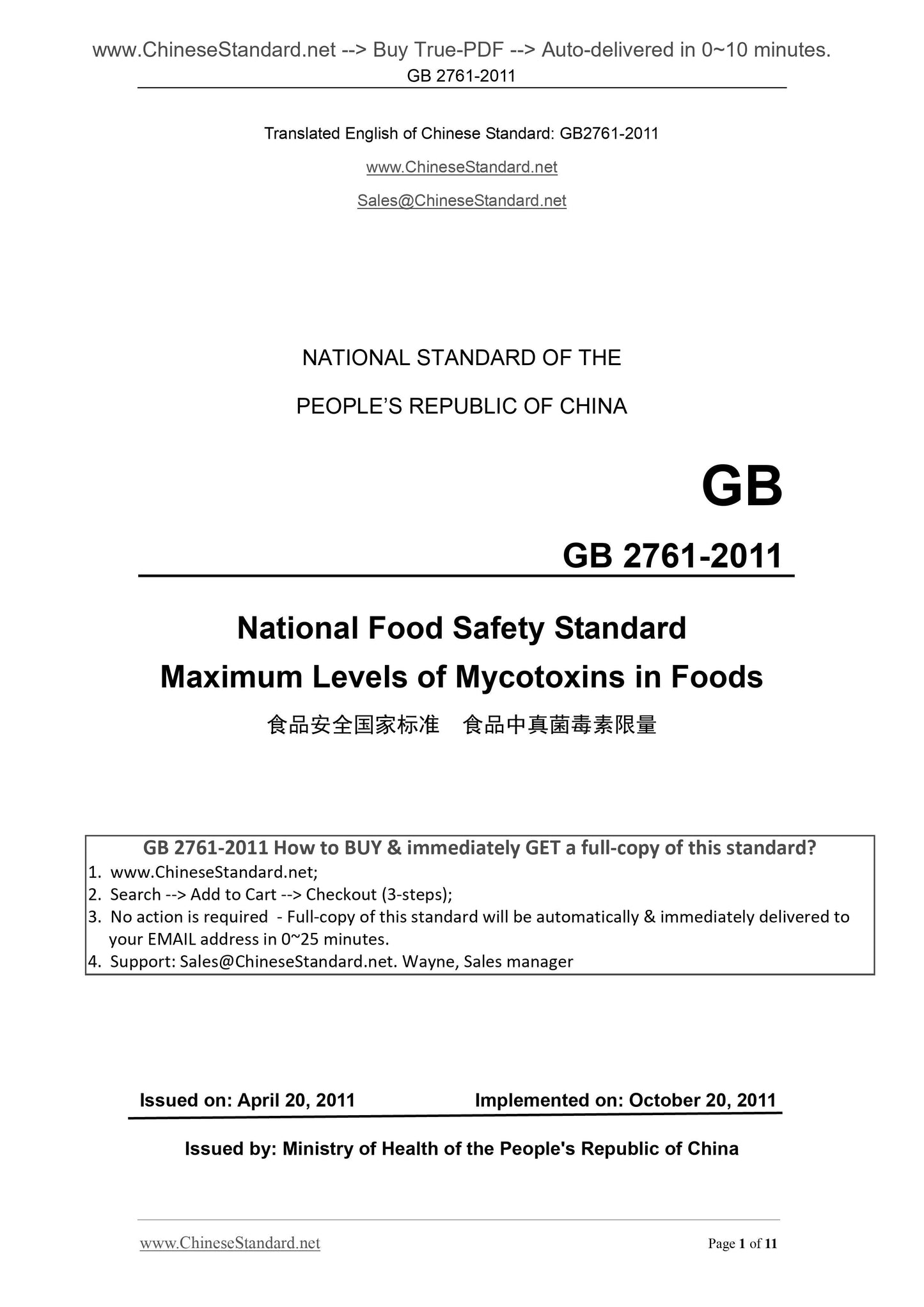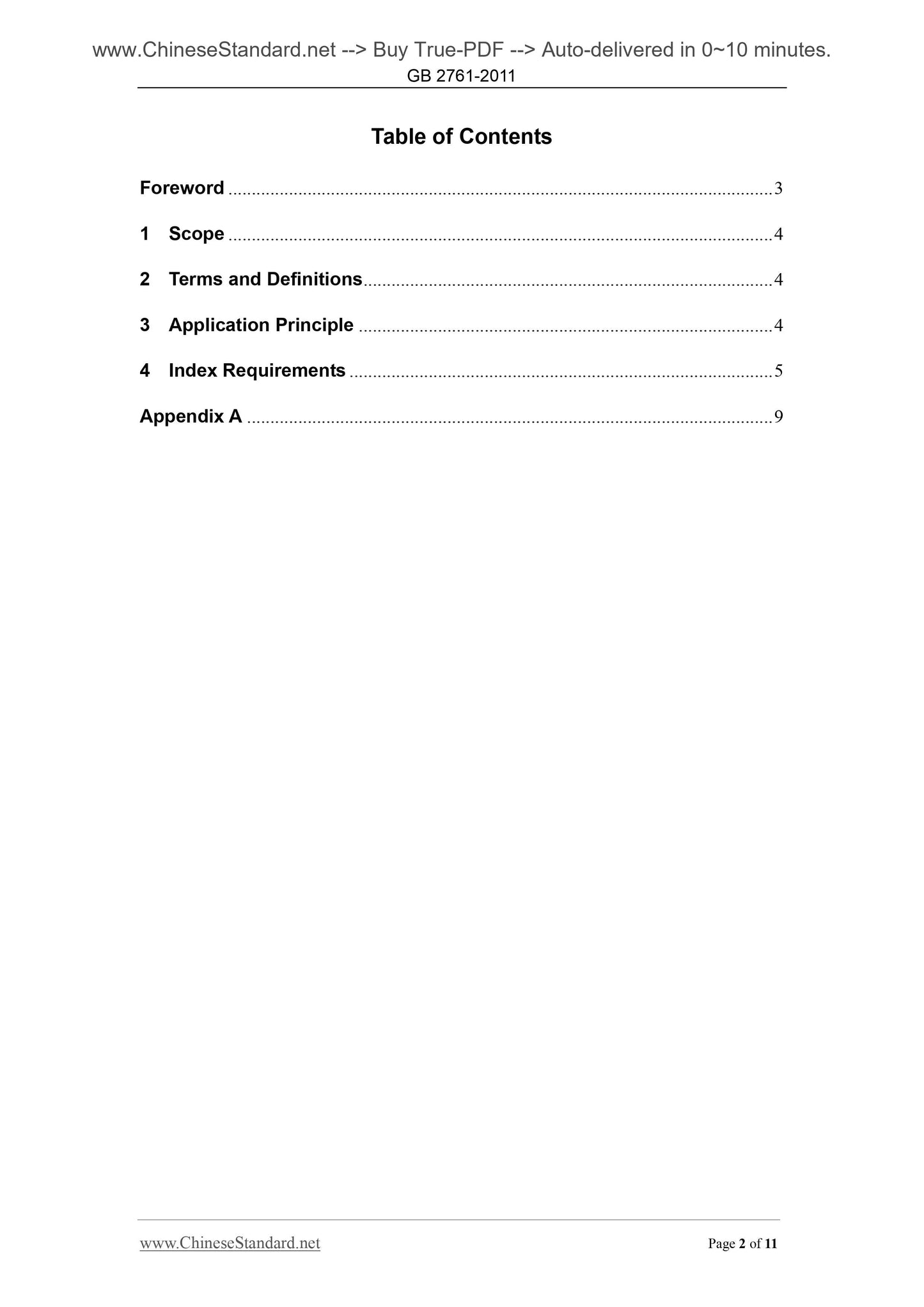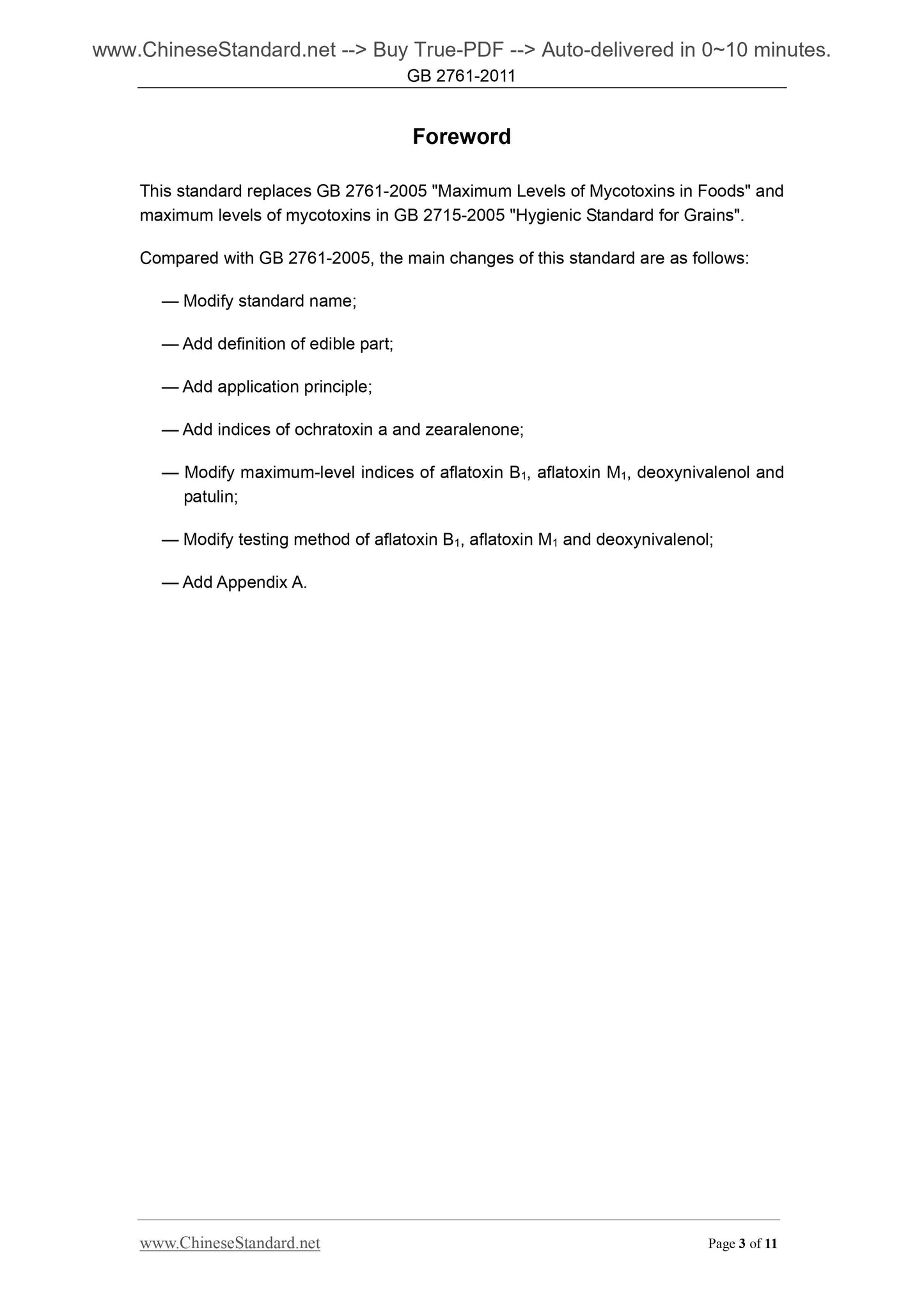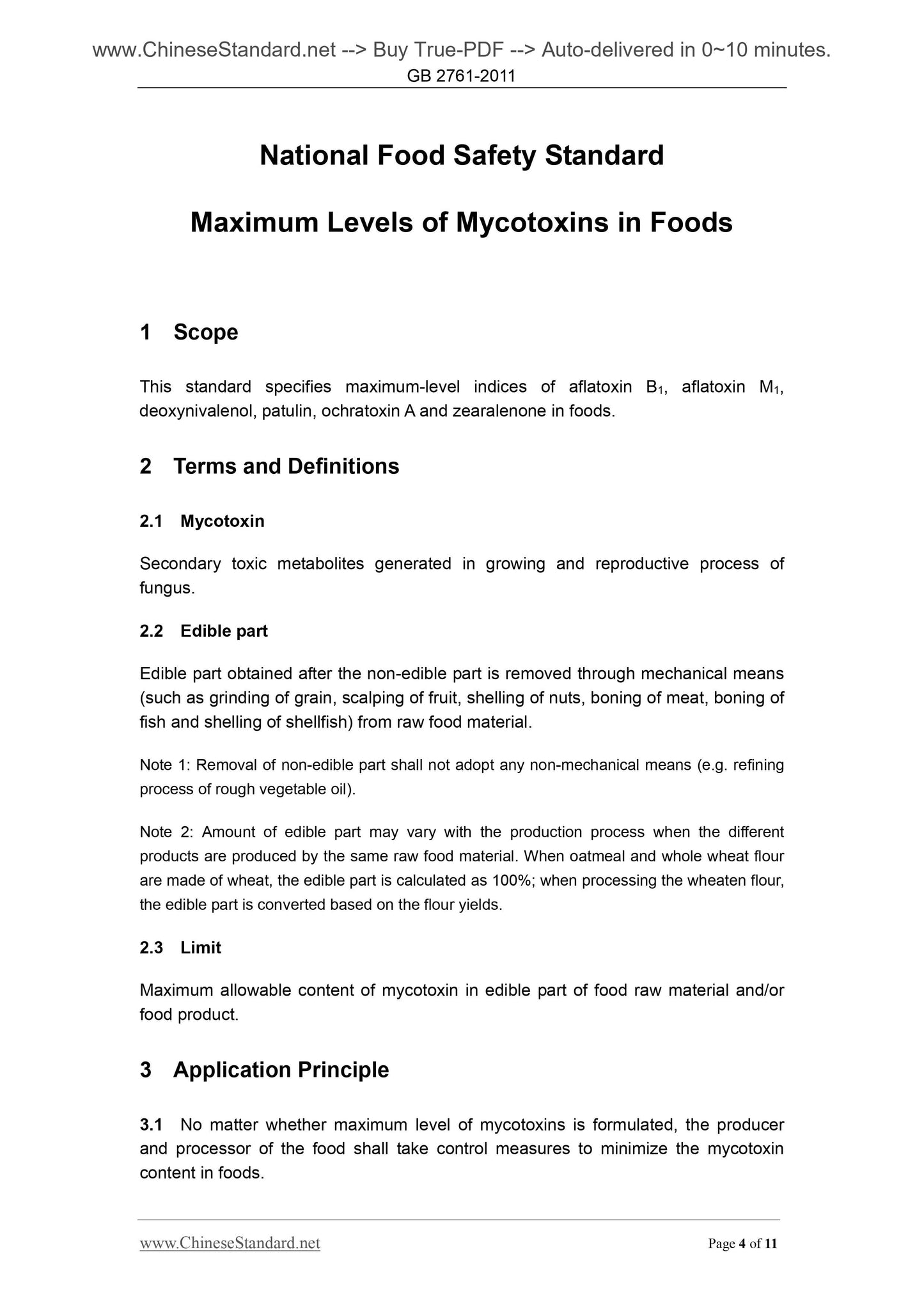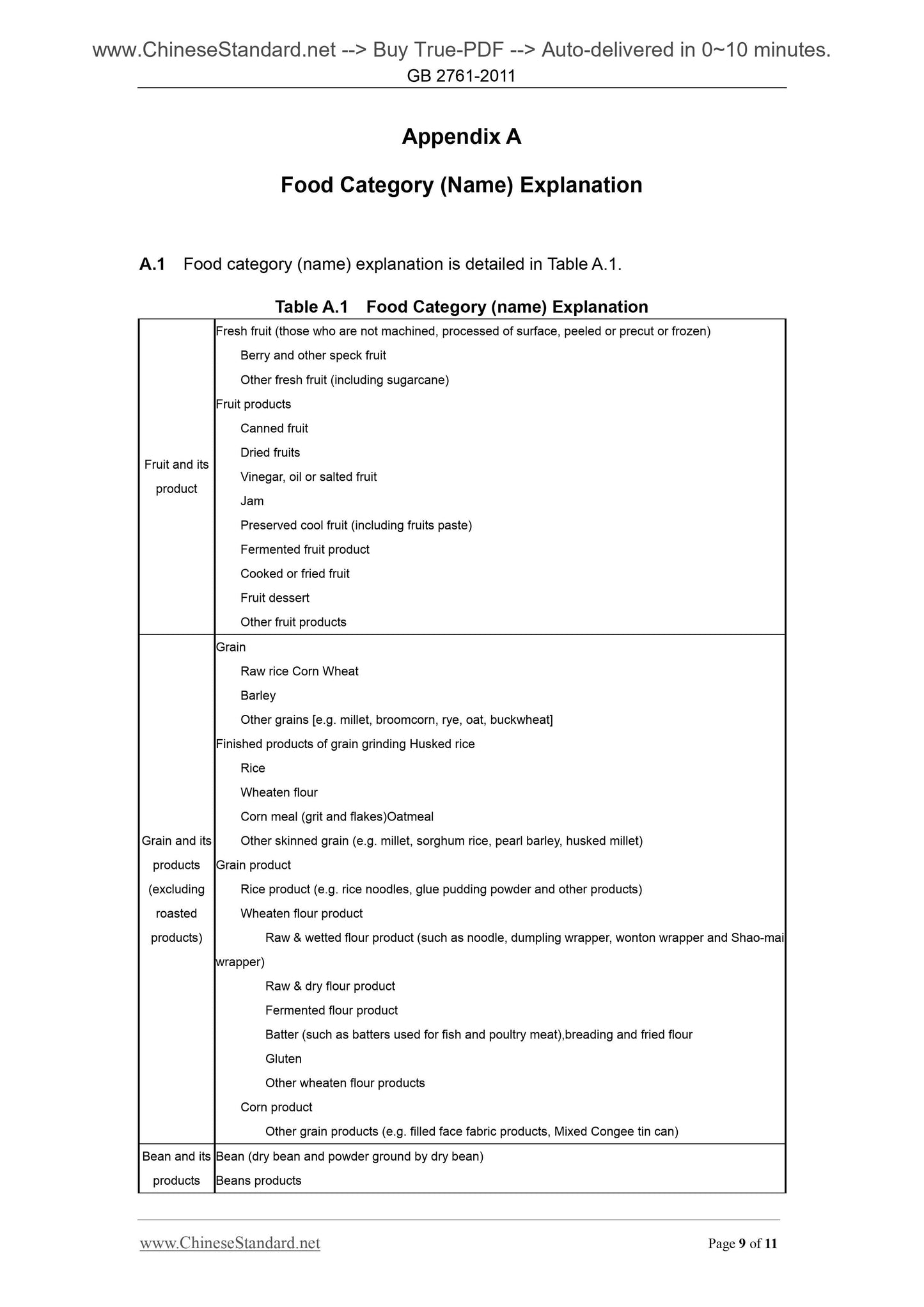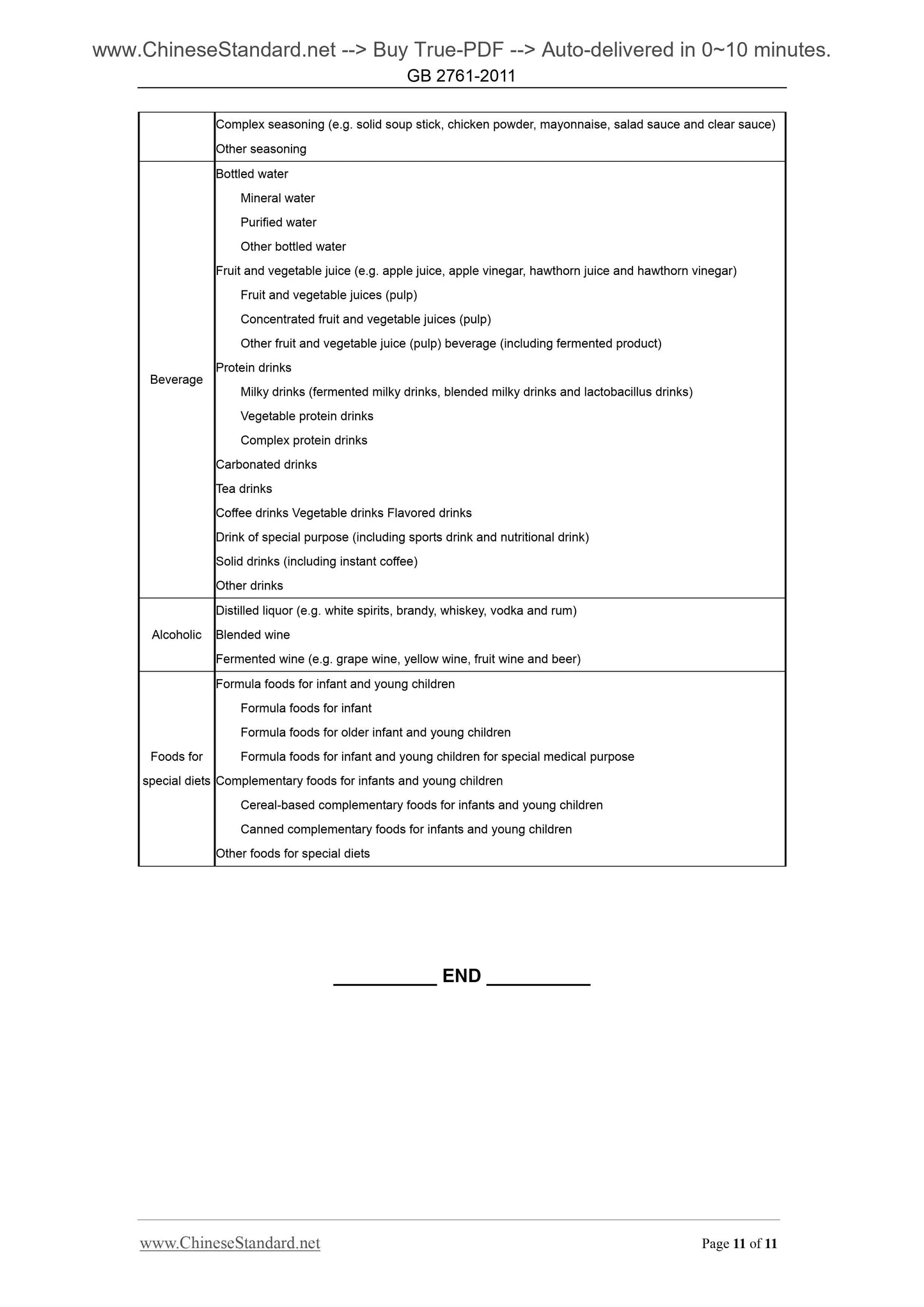1
/
of
6
PayPal, credit cards. Download editable-PDF & invoice in 1 second!
GB 2761-2011 English PDF
GB 2761-2011 English PDF
Regular price
$70.00
Regular price
Sale price
$70.00
Unit price
/
per
Shipping calculated at checkout.
Couldn't load pickup availability
GB 2761-2011: National food safety standards -- Limited edition of mycotoxins in food
Delivery: 9 seconds. Download (and Email) true-PDF + Invoice.Get Quotation: Click GB 2761-2011 (Self-service in 1-minute)
Newer / historical versions: GB 2761-2011
Preview True-PDF
Scope
This standard specifies maximum-level indices of aflatoxin B1, aflatoxin M1,deoxynivalenol, patulin, ochratoxin A and zearalenone in foods.
Basic Data
| Standard ID | GB 2761-2011 (GB2761-2011) |
| Description (Translated English) | National food safety standards -- Limited edition of mycotoxins in food |
| Sector / Industry | National Standard |
| Classification of Chinese Standard | C53 |
| Classification of International Standard | 67.040 |
| Word Count Estimation | 10,135 |
| Date of Issue | 2011-04-20 |
| Date of Implementation | 2011-10-20 |
| Older Standard (superseded by this standard) | GB 2761-2005; GB 2715-2005 ial |
| Regulation (derived from) | Ministry of Health Bulletin 2011 No. 12 Ministry of Health, Ministry of Agriculture Bulletin 2012 No. 22 Ministry of Agriculture Bulletin No. 1859 |
| Issuing agency(ies) | Ministry of Health of the People's Republic of China |
| Summary | This Chinese standard specifies the foods aflatoxin B1, aflatoxin M1, Deoxynivalenol DON, patulin, ochratoxin A and zearalenone in foods. |
Share
